biology gcse y10 term 1
1/112
There's no tags or description
Looks like no tags are added yet.
Name | Mastery | Learn | Test | Matching | Spaced |
|---|
No study sessions yet.
113 Terms
diffusion
the overall movement of particles from an area of high concentration to low concentration
Particles move down a concentration gradient
This occurs until the concentration of particles is the same everywhere.
passive processes
processes in which energy isn’t transferred. e g. diffusion
concentration gradient
The difference in the concentration between different areas
diffusion in our bodies
Our bodies need oxygen and glucose for respiration
Your blood transports substances around your body.
Glucose and oxygen diffuse into the cells that need them.
Some chemical reactions produce waste products, such as carbon dioxide that can be toxic at high levels
It diffuses out of respiring cells.
factors that increase the rate of diffusion
decrease in the distance particles need to move
increase in concentration gradient
increase in surface area - allows more space for diffusion
osmosis
the diffusion of water molecules across a selectively permeable membrane from a high water potential to a low water potential.
water potential
The concentration of free water molecules
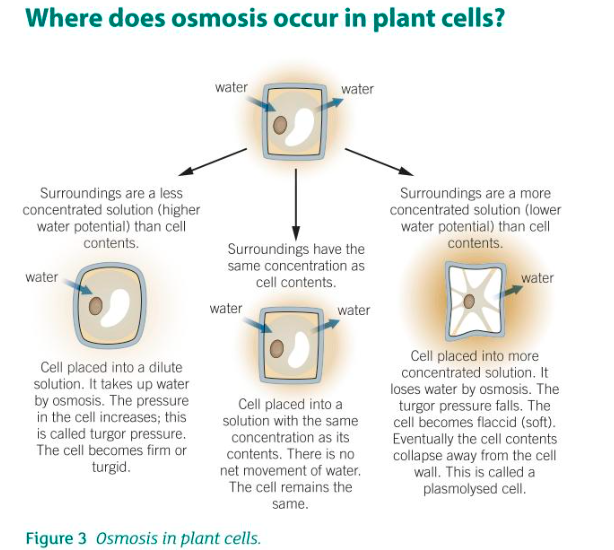
osmosis in plant cells
Plant cells can become turgid, flaccid or plasmolysed depending on the water potential of the solution it’s in
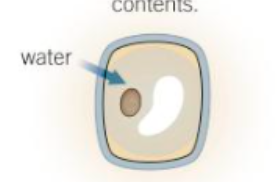
turgid
A state at which the plant cell will be in if the concentration of water outside the cell is higher than inside the cell.
This causes the water to move into the cell by osmosis.
turgor pressure
pressure caused by an increase of water moving into a cell
flaccid
the state of not being turgid, soft
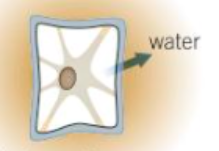
plasmolysed
The state at which a plant cell will be in if there is higher concentration outside the cell than inside. This causes the water inside the cell to move out. Cells in this state are unlikely to survive.
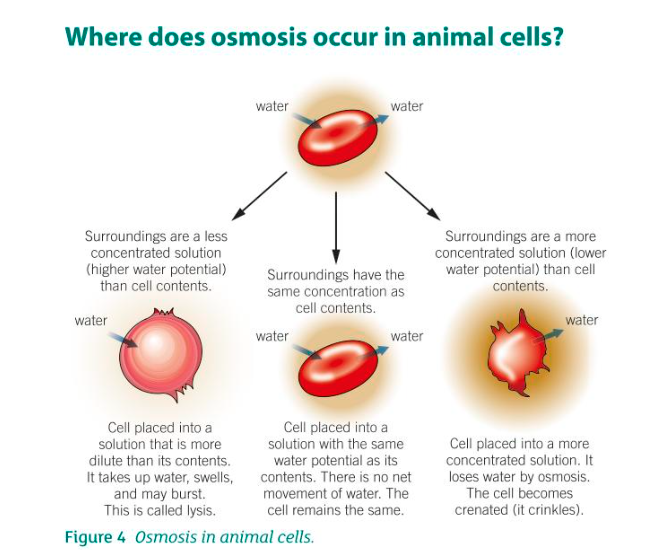
osmosis in animal cells
Can cause the the animal cell to be in lysis, flaccid or to be crenated
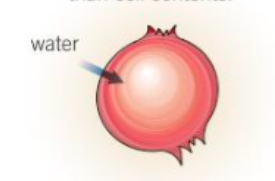
lysis
The state at which an animal cell is in if the concentration is higher outside the cell than inside, this causes water to move into the cell via osmosis and results in the cell swelling or bursting.
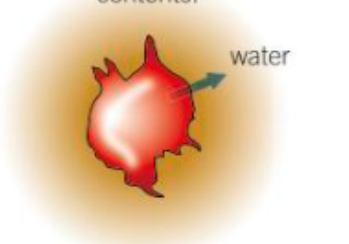
crenated
The state at which an animal cell is in if the concentration inside the cell is higher than concentration outside. This causes all of the water to move out of the cell via osmosis. Cells in this state look crinkly.
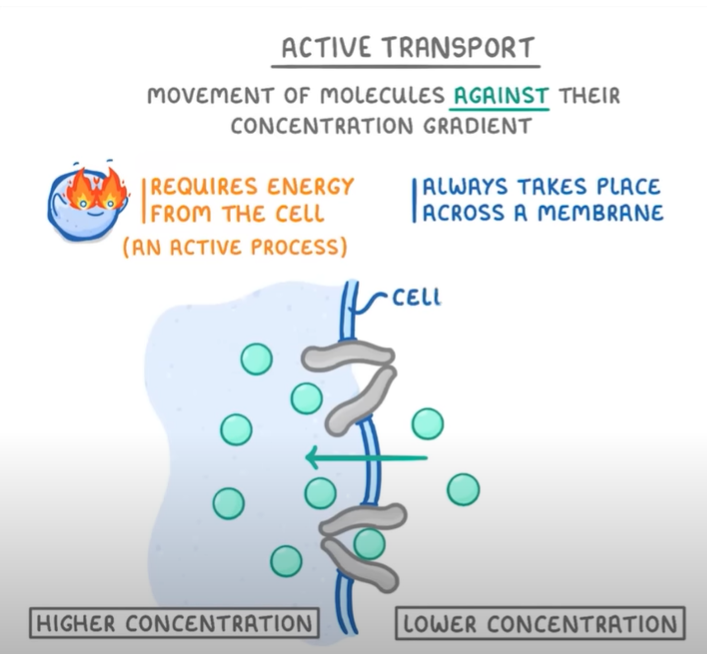
active transport
the movement of particles from an area where they are in lower concentration to an area where they are in higher concentration- against their concentration gradient.
This is not passive as diffusion is, but requires energy from respiration, which is why it is called active
It also makes use of carrier proteins in the cell membrane.
cells that carry out active transport
These cells contain lots of mitochondria to respire and produce lots of ATP . e.g root hair cells, villi & nerve cells
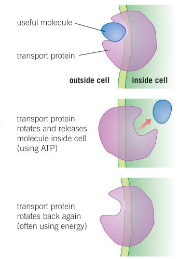
carrier proteins
special proteins that transport useful molecules during active transport. It is found it the cell membrane.
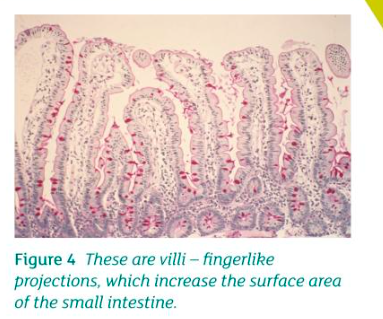
active transport in small intestine
We use active transport to absorb nutrients (such as amino acids and glucose) from the small intestine
If the concentration of nutrients in the intestinal cells is higher than the concentration of nutrients in the small intestine, they can’t diffuse across passively
Active transport allows nutrients to be absorbed into the walls of the intestine against the concentration gradient so they can enter the blood and can be transported around the body to be used for respiration
active transport in nerve cells
A carrier protein actively pumps sodium ions to the cell
At the same time potassium ions are pumped back in. .
The sodium potassium pump plays a large role in creating nerve impulses.
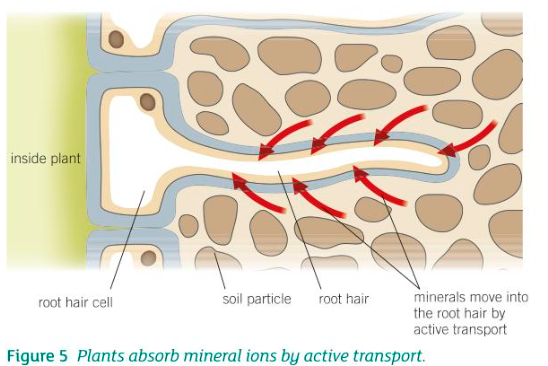
Active transport in plants
Plants need to absorb plenty of water and mineral ions to survive, plants achieve this by having a large network of roots in the ground
Root hair cells line the outside of the plant, these cells absorb water and mineral ions from the soil.
plants need minerals such as magnesium and nitrate from the soil for growth, however there is a larger concentration of the mineral in the root hair cells than the soil, meaning diffusion cannot occur
.Instead carrier proteins use ATP to transport the minerals against the concentration gradient and into the root hair cells
difference between diffusion and active transport
Diffusion is a passive process in which particles move down a concentration gradient from an area of high concentration to low concentration. It doesn’t need any energy since its inevitable, like water flowing down a hill. .Active transport however is an active process in which particles move up the concentration gradient from an area of low concentration to area of high concentration. It uses energy and carrier process because unlike diffusion, the particles need help moving as it isn’t quite natural, such us water moving uphill.
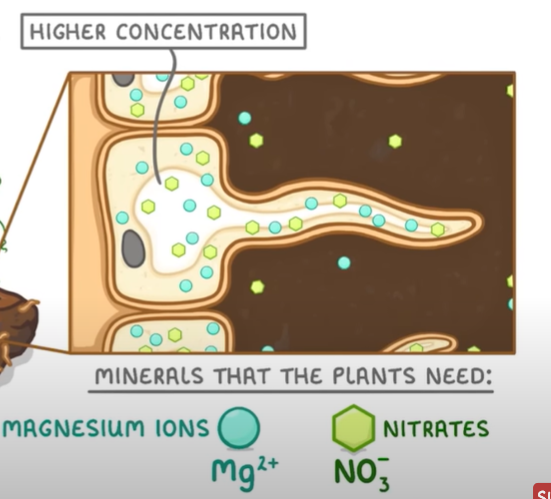
root hair cells
Root hair cells are specialised cells that line the outside of the roots, these cells absorb water and mineral ions from the soil
They are adapted to their role by having long hair like protrusions that stick into the soil
They have a large surface area to absorb high amounts of water and mineral ions.
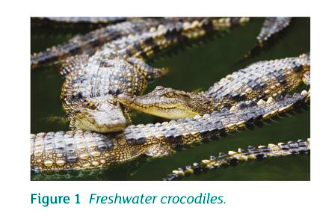
how freshwater crocodiles use active transport
They sometimes live in saltwater. Special salt glands in their tongue remove excess salt from their bodies, against a concentration gradient.
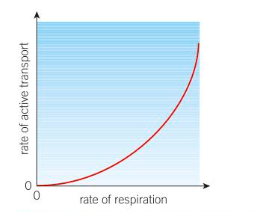
effect of rate of respiration on rate of active transport
As the rate of respiration increases, so does rate of active transport
This is because a product of respiration is ATP which is used in active transport.
More ATP means more active transport.
differentiation
The process in which cells change to become specialised cells.
stem cells
These are cells that have the ability to be repeatedly divided by mitosis and are able to differentiate into specialised cells.
zygote
The first cell that is formed when a sperm cell fertilises and egg cell. It divides by mitosis to form a group of zygotes called an embryo
an embryo
A group of zygotes cells
embryonic stem cells
this type of stem cell is derived from embryos, they can divide by mitosis and differentiate into absolutely any type of cell. however they’re only present until the baby is born.
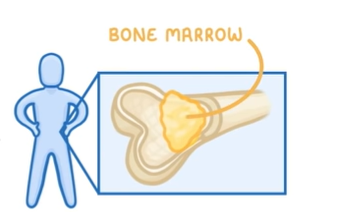
bone marrow
Found in the middle of a bone, it is a jelly like substance that contain stem cells.
adult stem cells
This type of stem cell can only differentiate into different types of blood cells e.g red blood cells, white blood cells and platelets. However they can replace damaged cells.
difference between embryonic stem cells and adult stem cells
Embryonic stem cells can differentiate into any type of cell, but adult stem cells can only differentiate into blood cells and replace damaged cells.
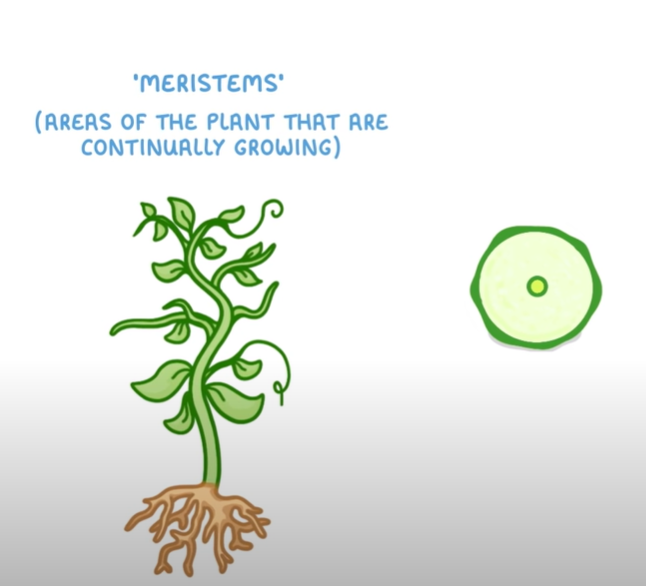
plant stem cells
This type of stem cell is found in plant tissues called meristems.
It persists the entirety of the plant’s life and It can differentiate into all of the type of cells that the plant needs e.g. palisade cells, phloem + xylem cells & root hair cells
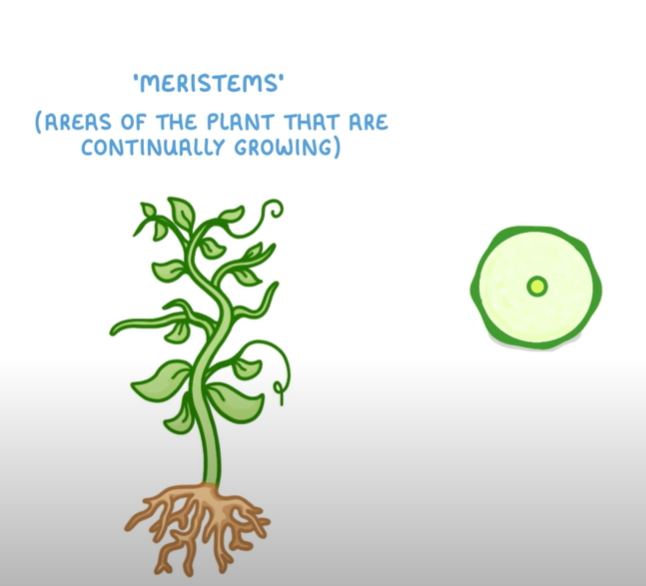
meristems
areas of plants that can continually grow, such as the tips of the roots and shoots and between xylem and phloem cells
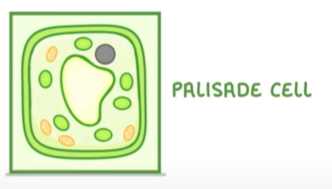
palisade cells
Rod shaped cells that contain large numbers of chloroplasts for photosynthesis.
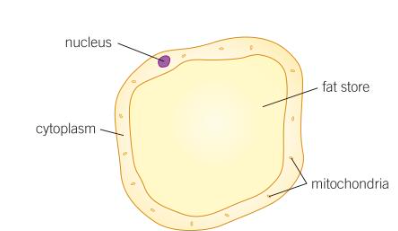
fat cell
a cell specialised to store fat which is also used as a store for energy. This lets animals survive when food is low
they provide animals with insulation and are used to protect organs such as the heart.
It is adapted by having a small layer of cytoplasm surrounding the fat reservoir, they can expand 1000x their size as they fill with fat.

sperm cells
a cell specialised to transfer genetic material from the male to the ovum. It’s adaptions include:
A flagellum to swim to the ovum
lots of mitochondria for energy released by respiration (which occurs in mitochondria)
acrosome to store digestive enzymes to break down outer layers of the ovum to transfer genetic material.
ovum
egg
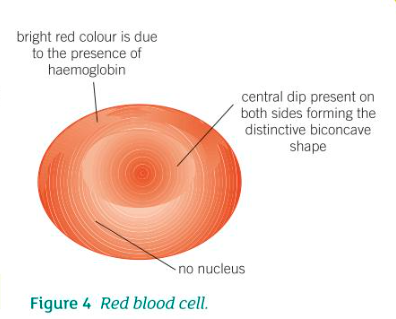
red blood cell
a cell specialised to transport oxygen around the body that have 3 main adaptions:
biconcave discs- their shape increases the surface area to volume ratio speeding up the diffusion of oxygen
packed with haemoglobin- a protein that contains iron and binds with oxygen
They contains no nucleus- means more space for haemoglobin
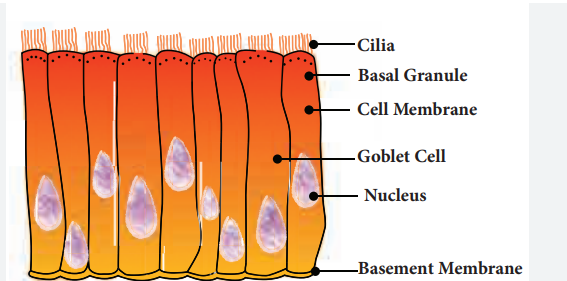
ciliated cells
This type of cell is present in the airways (bronchioles) , in between these cells are Goblet cells which produce sticky mucus to trap dirt and bacteria.
Cilia (tiny hairs) on top of the cells sweep the mucus away from your lungs to the back of your throat
You then swallow the mucus and any bacteria present is killed in the stomach
epithelial cells
a type of cell that covers the inside and outside of the surfaces of your body.
mitosis
The process in which cells divide.
Each cell divides to create two identical daughter cells, clones of the parent cell
This process increases the number of cells in a multicellular organism.
cell cycle
The process of cell growth and division. It has 4 stages:
DNA replication
movement of chromosomes
cytokinesis
The growth of a daughter cell
mitotic phase
The phase in the cell cycle in which mitosis takes place
DNA replication
The first stage of the cell cycle.
It occurs in the nucleus (eukaryotic) and its purpose is to make more DNA for the daughter cells.
First an enzyme unzips the DNA, resulting in the DNA bases on both strands to be exposed
free nucleotides in the nucleus bind to the strands using the complementary bases creating base pairs.
This results in two identical molecules of DNA
free nucleotides
sugar, phosphate, and nitrogen base complexes that are unattached to a DNA or RNA strand and are available for base pairing stored in the nucleus
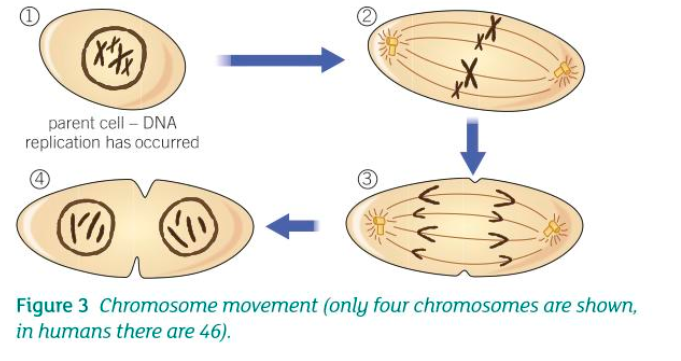
The movement of chromosomes
The second stage of the cell cycle.
The chromosomes line up across the centre of the cell.
The two identical copies of each chromosome separate and move to opposite end of the cell
Each end now contains a full set of identical chromosomes
two new nuclei form
cytokineses
In the 3rd stage of the cell cycle, the cell membrane pinches inwards to separate and enclose the 2 new nuclei.
the cell membrane then pinches off the original cell into 2 new identical daughter cells.
growth of the daughter cells
the last stage of the cell cycle. Each of the daughter cells grow independently and eventually start replicating their DNA and the cycle begins again.
purposes of mitosis
The growth, repair and asexual reproduction
Asexual reproduction
a type of reproduction that only involves one parent so there is no joining of sex cells during fertilisation. Organisms produced by asexual reproduction are genetically identical to each other and their parent.
sexual reproduction
the joining of the male and female gametes
gametes
sex cells such as the male sperm cell and the female ovum
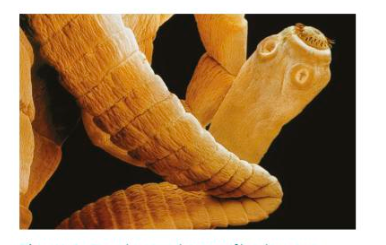
tapeworm/ taenia species
a type of parasite that lives in your digestive track. It absorbs nutrient directly through it’s skin. food from your digestive system diffuses through it’s skin
how surface area to volume ratio effects diffusion
The larger the surface area, the lower the diffusion distance making diffusion occur faster
3 factors that effect rate of diffusion
temperature, concentration gradient, surface area to volume ratio
exchange surfaces
specialized structures in the body that allow for the exchange of materials between the body and the environment e.g alveoli, villi etc
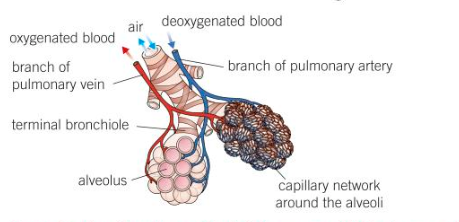
alveoli
structures in the lungs that have a large surface area to increase the rate of gas exchange (diffusion)
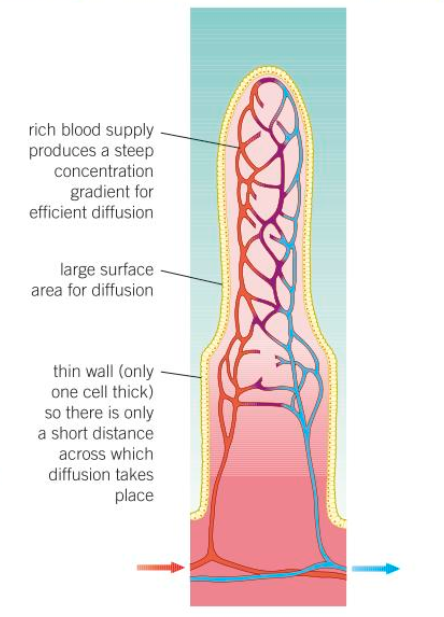
villi
structures found in the intestines that have large surface areas to increase the rate of diffusion of nutrients from the digested molecules
the circulatory system
The main transport system in animals
Its is made up of the heart and blood vessels
blood
a substance that transports oxygen around the body and helps get rid of waste products such as carbon dioxide. It consists of white blood cells, red blood cells, platelets and plasma.
closed system
a system that does not allow transfer of matter in or out of the system
what the heart is made up of
cardiac tissue. Its only found in the heart, they are very unusual since they contract without nerve impulses from the brain.
pacemaker cells
A group of cells in the right atrium of the heart
They create electrical impulses which spread across the muscular walls of the heart, causing them to contract.
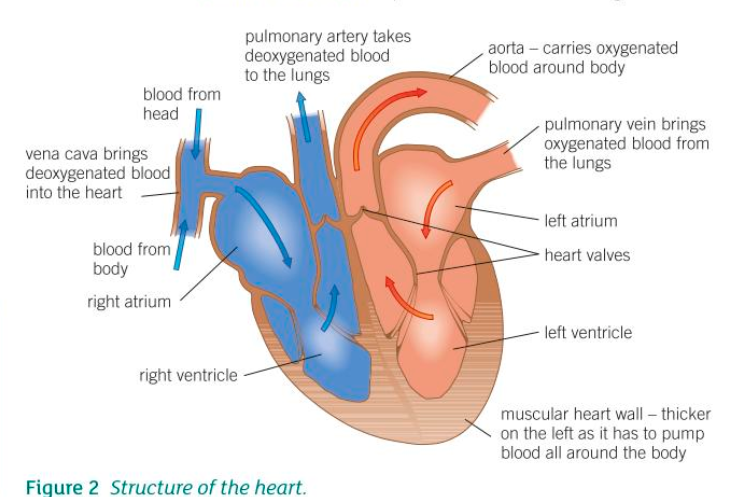
the 4 chambers of the heart
left atrium, right atrium, left ventricle, right ventricle
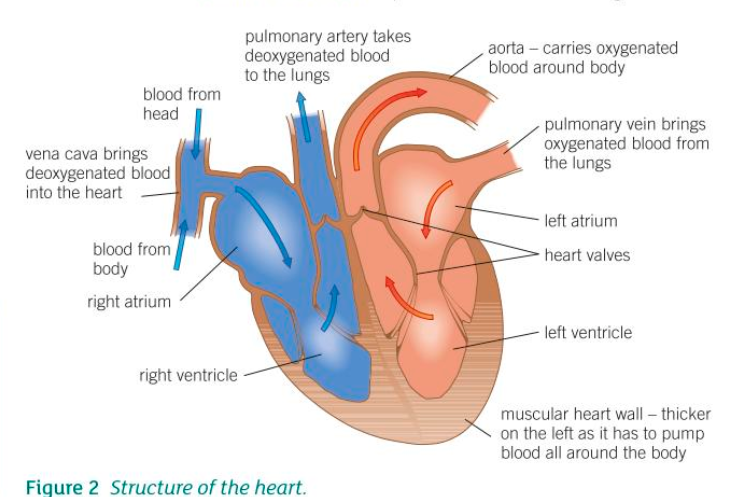
circulatory system explanation
1) blood flows to the heart- deoxygenated blood from the body flows through the vena cava to the right atrium and the oxygenated blood from the lungs flows through the pulmonary vein to the left atrium.
2) The 2 atria then contract, this pushes the blood in the atria down the left and right ventricles.
3) Soon after, the heart then contracts again- this causes the deoxygenated blood in the right ventricle the be pumped to the lungs through the pulmonary artery and for the oxygenated blood in the left ventricle to be pumped towards the body through the aorta.
4) simultaneously, new blood enters the atria the cycle repeats again.
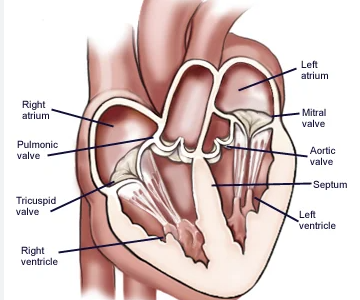
valves
Parts of the heart that regulate blood flow and make sure that blood is traveling in the right direction
There are 4 main ones in the heart
tricuspid valve, pulmonary valve, mitral valve and the aortic valve.
tricuspid and pulmonary valves
valves found in the right chambers of the heart
mitral and aortic valves
valves found in the left chambers in the heart
double system
A name used to describe the circulatory system, this is because it has 2 circulations - the lungs and the body. It is also because blood flows through the heart twice on each circuit

white blood cells
large cells that contain a nucleus, the fight diseases by making antibodies or changing shape to engulf microorganisms
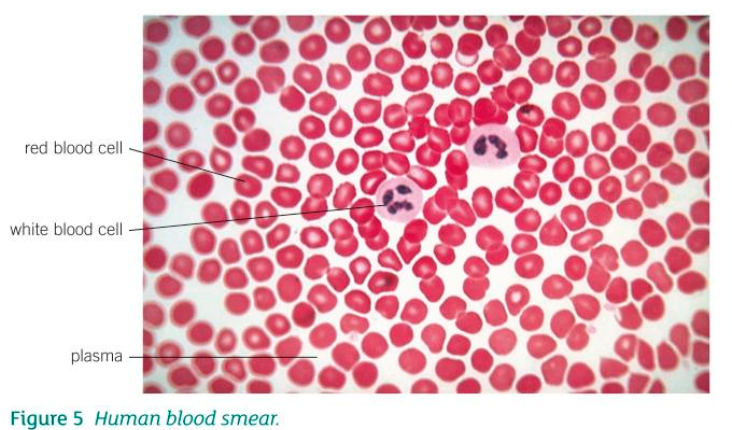
red blood cells
small biconcave cells that have no nucleus and contain haemoglobin
They carry oxygen and can fit through the lumen of a capillary only 1 cell at a time.
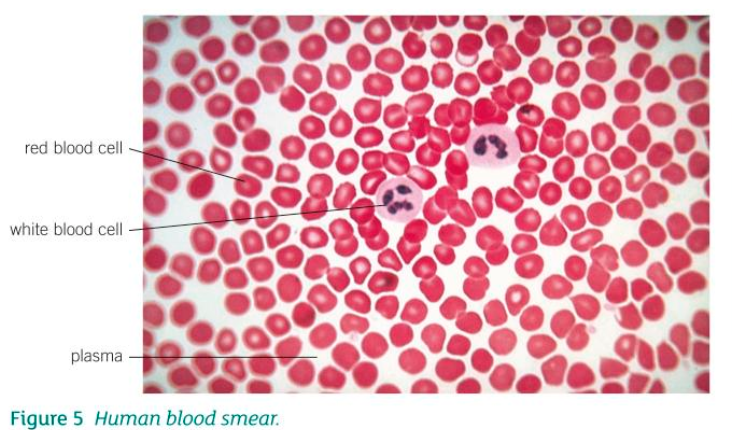
plasma
A straw coloured liquid that blood cells float in
Over 90% of plasma is water and it transports many materials such as digested foods (glucose & amino acids), wastes (carbon dioxide) and antibodies.
Excess water is taken from the large intestines to the kidney where it is then removed.
platelets
tiny stuctures that help blood clot
blood vessels
Tube like structures that transport blood around the body
There are 3 types : arteries, veins and capillaries
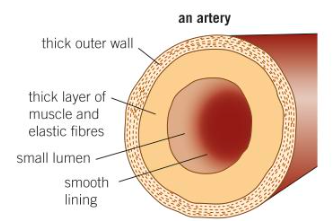
arteries
a type of blood vessel that carries blood away from the heart under high pressure. They have a thick outer wall , thick layer of muscle and elastic fibre and a small lumen.
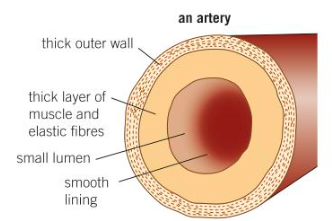
why arteries have a thick wall and a thick layer of muscle and elastic fibres
strong contraction cause blood to leave the heart at high pressures. Since arteries are the blood vessels that carry blood away from the heart, they need to have thick walls and thick muscle layers to withstand the high pressure of the blood.
recoil
when the arterial wall expands with the force of each contraction and snaps back
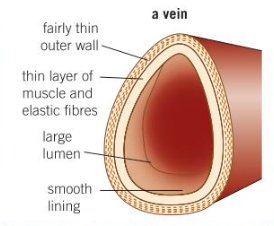
veins
A type of blood vessel that return blood to the heart. They have a fairly thin outer wall, thin layer of muscle and elastic fibres and a large lumen. They contain valves to prevent backflow.
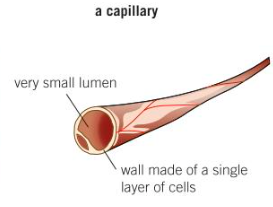
capillary
A type of blood vessel that link arteries and veins in tissues and organs. They form a network so that every cell is close to a capillary. Their semi-permeable wall is only one cell thick to decrease diffusion distance so that substances can be easily move through.
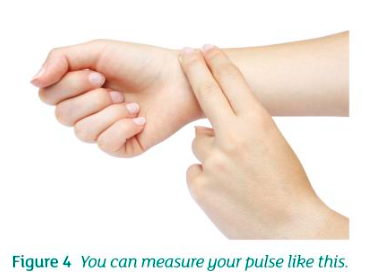
pulse
A measure of heart rate. It is created when the artery expands and then recoils when the blood passes
xylem tissue
A plant transport system that transports water and mineral ions from the roots to the stem, leaves and flowers
The water diffuses into the roots via osmosis and active transport.
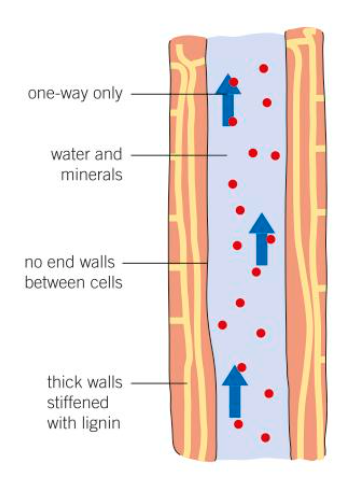
xylem vessels structure
These vessels are made from dead xylem cells:
They lose their end walls so the xylem forms a continuous, hollow tube.
They become strengthened by a substance called lignin. Lignin gives strength and support to the plant. We call lignified cells wood.
xylem vessels are impermeable
Transport in the xylem is a physical process, it doesn’t require energy
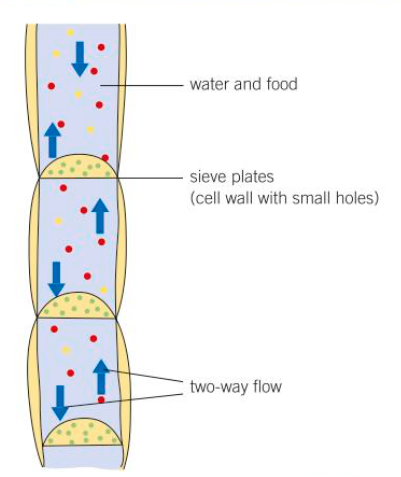
phloem tissue
A plant transport system that transports dissolved sugars produced during photosynthesis, and other soluble foods from the leaves to everywhere else in the plant. This is also translocation.
growing parts of the plant for immediate use
storage organs such as bulbs and tubers
developing seeds
uses of translocation
The phloem moves food substances that the plant has produced by photosynthesis to where they are needed for processes such as:
growing parts of the plant for immediate use
storage organs such as bulbs and tubers
developing seeds
bulbs
An underground food store that is able to grow into a new plant. A natural method of asexual reproduction in plants.
tubers
A swollen, fleshy underground stem of a plant, such as the potato, bearing buds from which new plant shoots grow from
translocation
The transport of substances in the phloem
This is an active process and therefore needs energy
In this process, sugars are taken to the meristems where they’re needed to make new plant cells and to store tissues in the root
This provides an energy store.
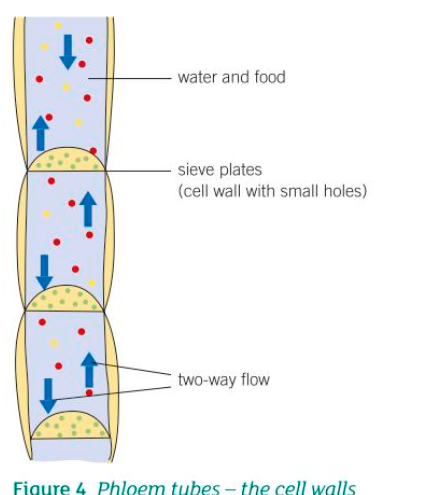
structure of phloem
Phloem consists of living cells. The cells that make up the phloem are adapted to their function:
Sieve tubes - cell walls in these walls don’t break down, instead turn into sieve . They’re specialised for transport and have no nuclei. Each sieve tube has a perforated end so its cytoplasm connects one cell to the next. Sucrose and amino acids are translocated within the living cytoplasm of the sieve tubes.
Companion cells - transport of substances in the phloem requires energy. One or more companion cells attached to each sieve tube provide this energy. A sieve tube is completely dependent on its companion cell(s).
the cell walls are permeable.
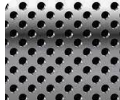
perforated end
an end with holes in it
companion cells
Cells that help the phloem to transport substances by providing energy.
vascular bundles
A group of xylem and phloem tissues
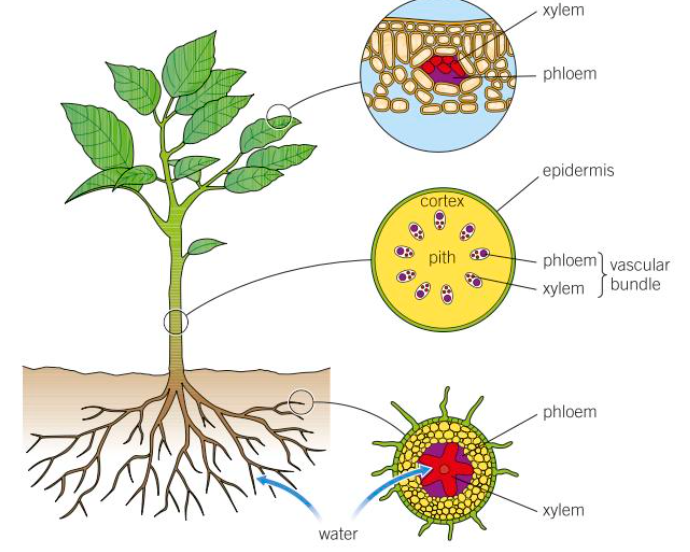
location of vascular bundles
In the leaf, they form a network which supports the softer leaf tissue.
In the stem they’re located around the outer edge, providing the stem with strength to resist bending in the breeze.
In the root they’re found at the centre, enabling the root to act as an anchor- the root can bend as the plant moves in the wind
transpiration
The loss of water from a plants leaves. The water lost must be replaced by uptake through the roots
Unlike animals, plants don’t have a heart to pump fluids through their transport system, instead water moves through xylem cells through this process
uptake
The transfer of substances from the environment to plants, animals, and humans.
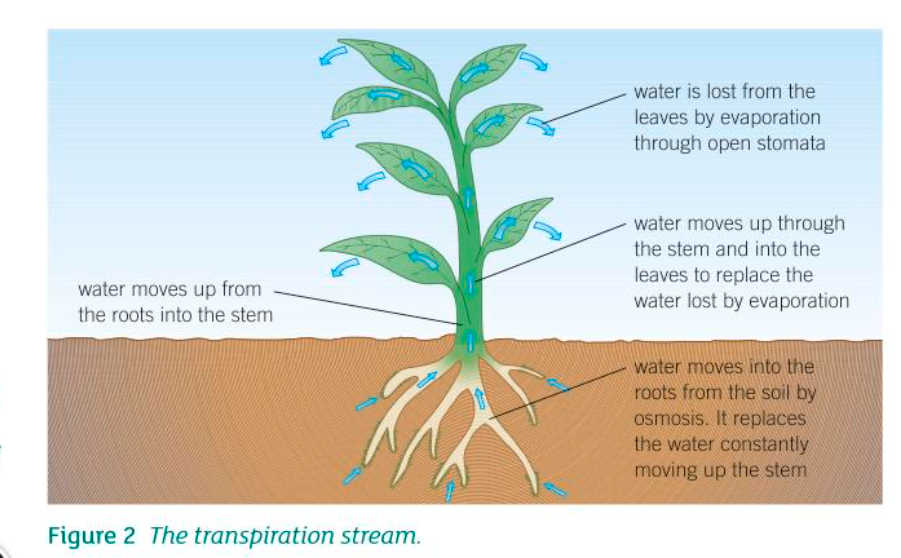
transpiration stream
The constant flow of water from the roots, through the xylem and out of the leaves.
how water enters the xylem
Water diffuses from the soil to the root hairs via osmosis
Before water can enter the xylem, it must travel cell to cell until it reaches the centre of the root
Once in the xylem the water can be transported throughout the plant.
How water is lost from leaves
While the stomata are open, water evaporates from cells inside the leaf, into the air spaces
This creates a concentration gradient between the air inside the leaf and the surrounding air
Water vapour then diffuses out of the leaf (high concentration) into the air (low concentration of water vapour).